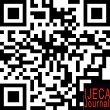Strengthening the Character of the Nation through the Social Movement of Zikir
Abstract
This research aims to prove the benefits of zikir that contribute positively to the strengthening of the character of the nation. The approach used in this research was qualitative, and data collection used interview, observation, and documentation techniques, with 6 informants involved in it. Data validity assurance technique was conducted by extending the time of data collection, persistence of observation, data triangulation, and conducting negative case analysis. The results of this study were: (1) The concept of social thoughts in building social movements and to be implemented in the civilization based on three things, namely: social of right society (الصفحة في المتواحدة االمة), social of law society (القانونية في المتواحدة االمة) and social gathering of philosophy (الفالسفية في المتواحدة االمة); (2) Forms of activities developed in their social movements through theological thinking based on social movements, including recitation, Tahlilan, Zikir Akbar and Haul Majelis Zikir; (3) The inhibiting and supporting factors of the theological thought movement and the social movement of thought in building the social movement, which are the clear management and the congregation that are Istiqomah in participating in the activities
Keywords
Full Text:
DOWNLOAD [PDF]References
Bisri, M. (2017). Pengaruh Zikir Terhadap Ketenangan Dan Kebahagiaan Manusia, Perspektif Qurani. Ulumuddin : Jurnal Ilmu-Ilmu Keislaman, 7(2), 87–102. https://doi.org/10.47200/ulumuddin.v7i2.189
Burhanuddin, B. (2020). Zikir Dan Ketenangan Jiwa (Solusi Islam Mengatasi Kegelisahan dan Kegalauan Jiwa). Jurnal Mimbar: Media Intelektual Muslim Dan Bimbingan Rohani, 6(1), 1–25. https://doi.org/10.47435/mimbar.v6i1.371
Chappatte, A. (2021). When silence is “yeelen” (light): Exploring the corporeality of the mind in a nocturnal solo zikr practice (Odienné, Ivory Coast). Critical Research on Religion, 9(2), 175–190. https://doi.org/https://doi.org/10.1177%2F2050303220986982
Feldman Samet, H. (2019). “Allahi Zikr Edilim” (Let Us Do Zikr for Allah): The sabbatian appropriation of the sufi practice of Zikr as religious renewal. In Zutot (Vol. 16, Issue 1, pp. 43–53). https://doi.org/10.1163/18750214-12161002
Ikhsan, D., Fahmi, M. I., & Mafan, A. (2017). Model psikoterapi zikir dalam meningkatkan kesehatan mental [Zikir psychotheraphy in increasing mental health]. Academica Journal of Multidiscipinary Studies, 1(2), 271–280. http://ejournal.iainsurakarta.ac.id/index.php/academica/article/download/1054/299
Ismail, E. (2017). Landasan Qur’Ani Tentang Zikir Dalam Ajaran Tarekat. Syifa Al-Qulub, 1(2), 88–94. https://doi.org/10.15575/saq.v1i2.1434
Majelis, E., Kraton, Z., Muhamad, H., & Shahab, D. (2018). J u r n a l I l m u – I l m u K e i s l a m a n. 77, 67–77.
Muhammad, N. H. N., & Omar, S. H. . (2019). Remembrance (Zikr) Approach to Treat Drug Addiction Problems. International Journal of Academic Research in Business and Social Sciences, 9(7). https://doi.org/10.6007/ijarbss/v9-i7/6215
Muslim, A. (2018). Studi Etnopedagogi dalam Praktik Zikir Saman di Lombok Timur. Jurnal Studi Agama Dan Masyarakat, 14(2), 112. https://doi.org/10.23971/jsam.v14i2.742
Nur, F. M. (2017). Perspektif zikir di kalangan sufi. Jurnal Mahasiswa Fakultas Ushuluddin Dan Filsafat Universitas Islam Negeri Ar-Raniry, Banda Aceh, Indonesia, 19(2), 189–198.
Psikologi, J., Vol, I., Do, H. H. S., Dalam, Z., & Kecerdasan, M. (2017). Do’a Dan Zikir Dalam Meningkatkan Kecerdasan Emosi. Psikis : Jurnal Psikologi Islami, 2(1), 29–39.
Rusydati Khaerani, I. F. S., & Nurlaen, Y. (2019). Makna Simbolik Zikir Pada Jemaah Tarekat Qadiriyah Naqsabandiyah (Studi Kasus Pada Jemaah Tarekat Naqsabandiyah di Pondok Pesantren Sirnarasa Ciamis). Jurnal Studi Agama Dan Masyarakat, 15(2), 87–97. https://doi.org/10.23971/jsam.v15i2.1331
Safitri, S., Nashori, H. F., & Sulistyarini, I. (2017). Efektivitas Relaksasi Zikir Untuk Menurunkan Tingkat Stres Pada Penderita Diabetes Melitus Tipe Ii Relaxation With Dhikr To Decrease Stress Among Type Ii Diabetes Patients. Jurnal Intervensi Psikologi, 9(1), 1–15.
Sugiyono. (2012). Metode Penelitian Kuantitatif, Kualitatif dan R & D.Bandung:Alfabeta. Metode Penelitian Kuantitatif, Kualitatif Dan R & D.Bandung:Alfabeta. https://doi.org/10.1017/CBO9781107415324.004
Utami, T. N. (2017). Tinjauan Literatur Mekanisme Zikir Terhadap Kesehatan: Respons Imunitas. Jurnal JUMANTIK, 100(1).
Widyastuti, T., Hakim, M. A., & Lilik, S. (2019). Terapi Zikir sebagai Intervensi untuk Menurunkan Kecemasan pada Lansia. Gadjah Mada Journal of Professional Psychology (GamaJPP), 5(2), 147. https://doi.org/10.22146/gamajpp.13543
DOI: https://doi.org/10.31764/ijeca.v5i1.5635
Refbacks
- There are currently no refbacks.
Copyright (c) 2022 Rahmy Fuady Tanjung, Sandy Ariawan

This work is licensed under a Creative Commons Attribution-ShareAlike 4.0 International License.
IJECA (International Journal of Education and Curriculum Application) already indexed:










___________________________________________________________________
| |
____________________________________________________________________
IJECA Publisher Office:







.jpg)




